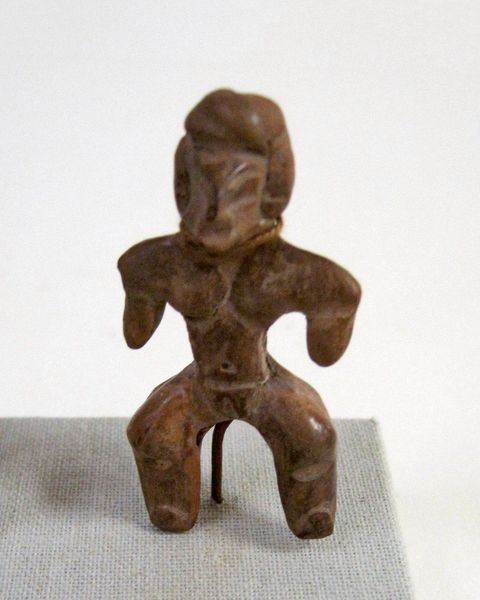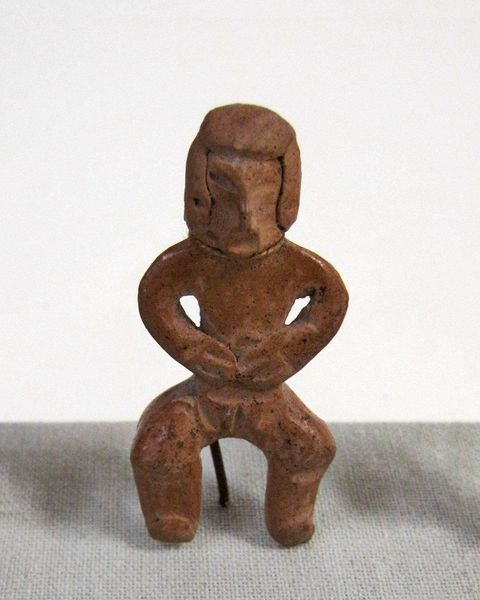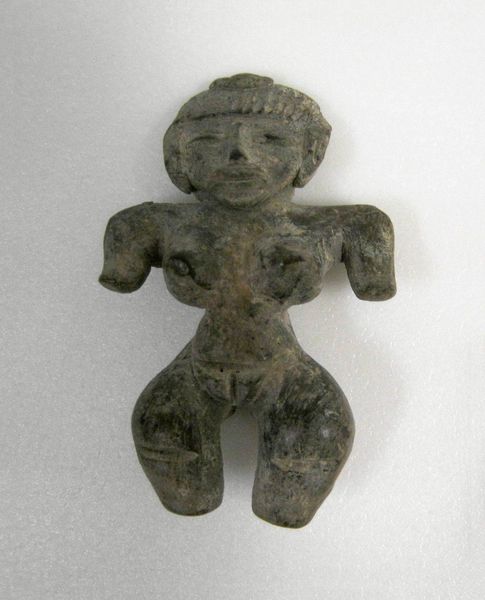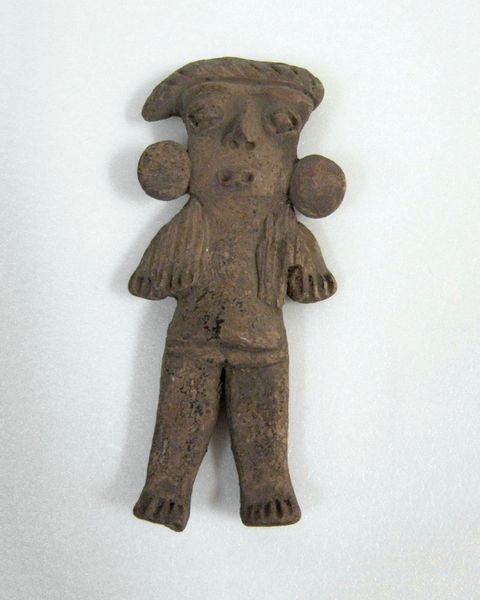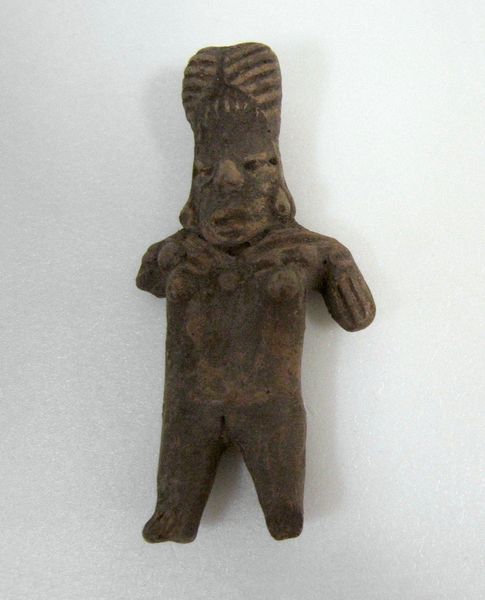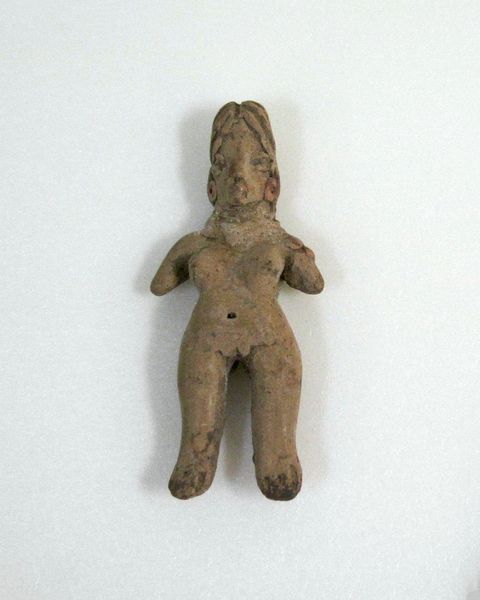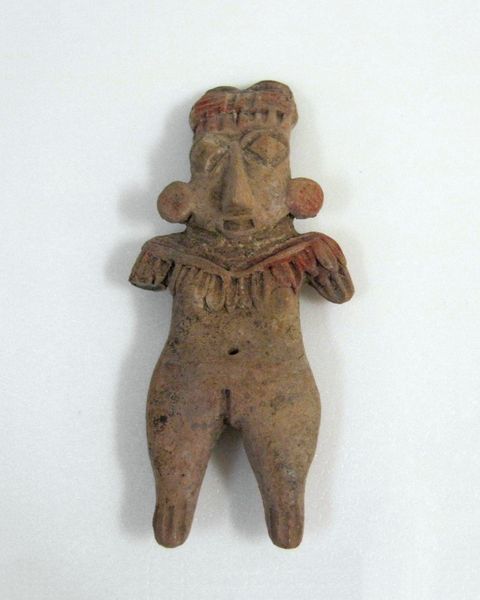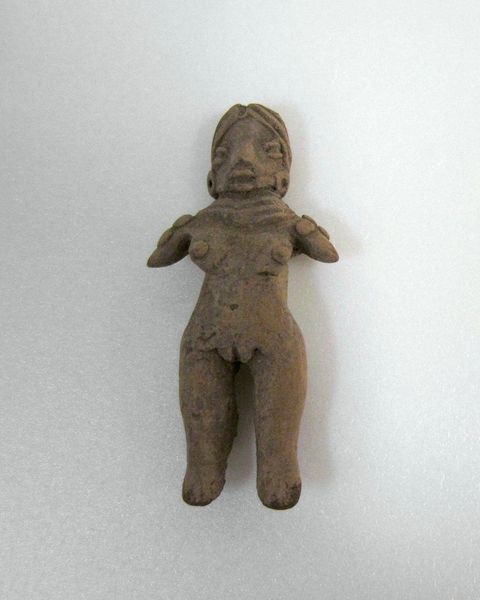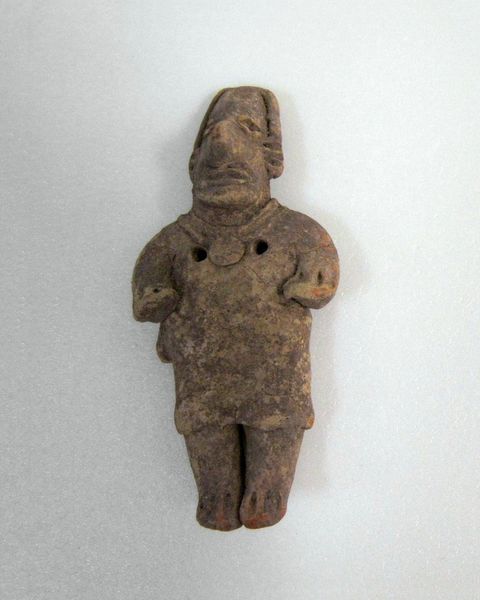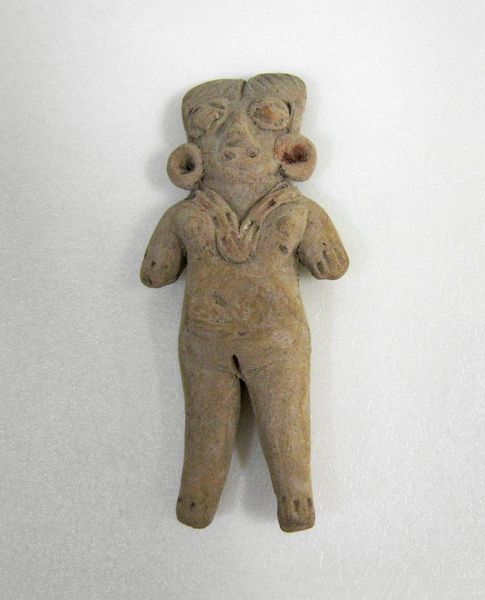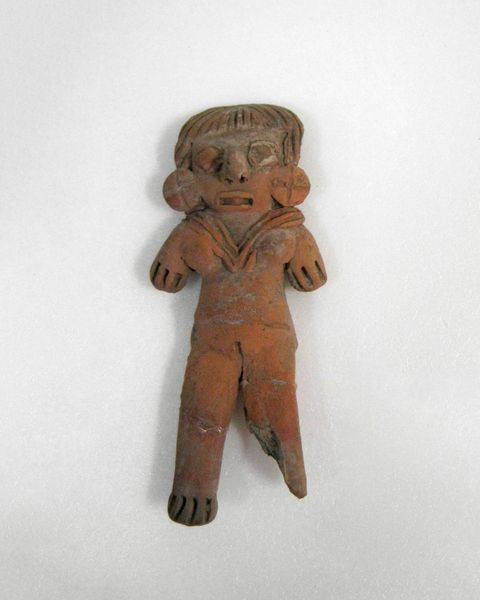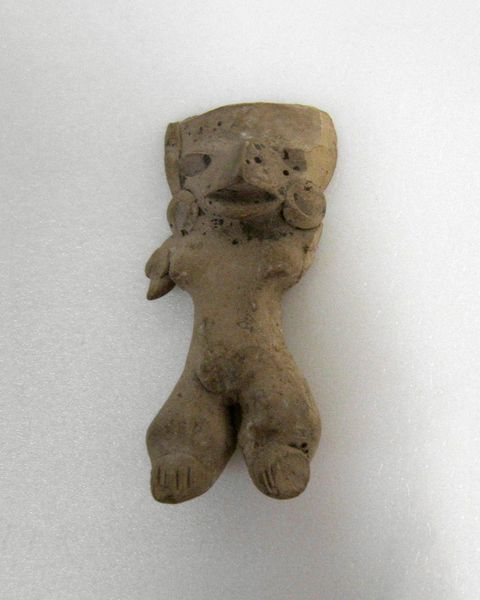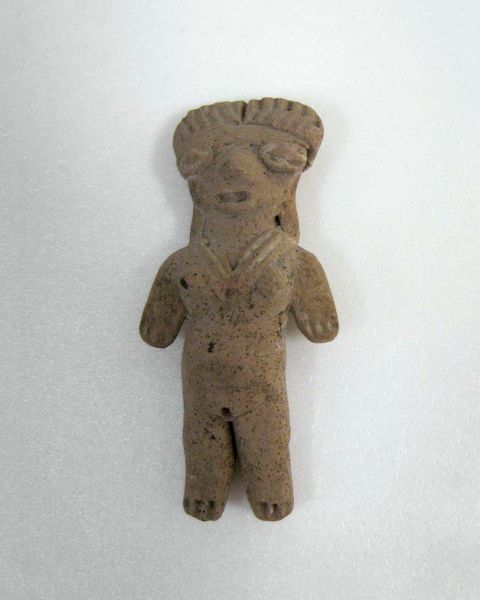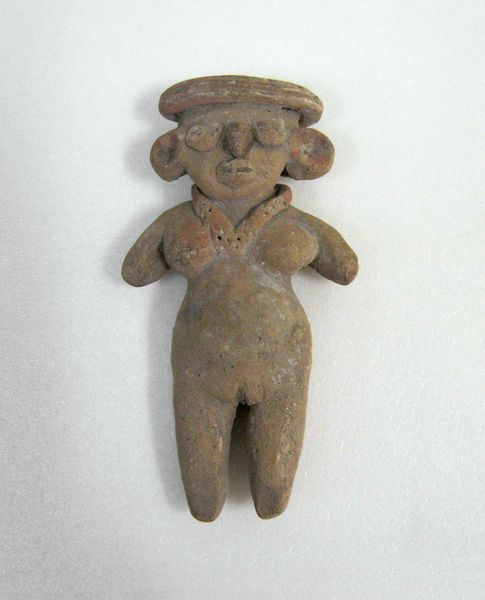
ceramic, earthenware, sculpture
#
sculpture
#
ceramic
#
figuration
#
earthenware
#
sculpture
#
indigenous-americas
Copyright: Public Domain
Editor: Here we have a ceramic figurine from the Pueblo peoples, dating back to around 1500. The compact size and earthy color give it a certain grounded quality. What can you tell us about this intriguing sculpture? Curator: Observe the way the Pueblo artist articulated form with such elemental simplicity. The composition adheres to fundamental geometries. The torso is almost cubic; the head, a softened sphere. Consider the balance achieved despite the figure’s static pose; it is undeniably present. Editor: So you're focusing on the... form. How the artist shaped the clay itself. What about, say, what the figure might represent? Curator: While iconographic interpretation holds value, let us not overlook the expressive power inherent in the figure's design. How do the concave negative spaces, carved out between the limbs, contribute to the overall dynamism of the form? Editor: I see. They almost seem to lighten the mass. The sculpture seems more active. But can we know whether they *intended* that dynamism? Curator: Intentionality remains an elusive specter. However, we can engage with the consequences of artistic choices. How does the rough, textured surface alter the reading of light and shadow? Editor: That texture *does* give it a raw, unfinished feel, even now. Thank you, I have never thought to look at artwork like that. Curator: The object itself speaks; it invites scrutiny through form. This approach allows the object to transcend its temporal and cultural origins, inviting a universal dialogue.
Comments
No comments
Be the first to comment and join the conversation on the ultimate creative platform.
